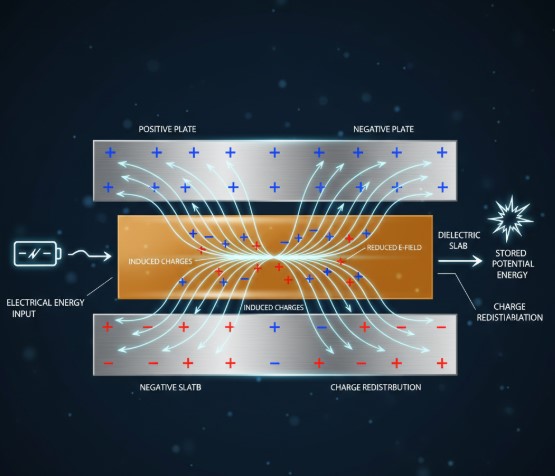Understanding the density of smooth functions in ##L1 and L2 spaces## is a core concept in functional analysis. It’s all about whether we can get really, really close to any function in these spaces using smooth functions. Think of it like approximating a jagged shape with a series of ever-smoother curves.
This idea, the density of smooth functions, has big implications for solving differential equations and analyzing signals. So, let’s explore how smooth functions can be used as building blocks to represent a wide range of functions, making complex problems more manageable. The density of smooth functions is essential.
Table of Contents
- Understanding Density of Smooth Functions
- Stone-Weierstrass Theorem and Bump Functions
- Convolution with Mollifiers: A Direct Approach
- Technical Considerations and Refinements
- Final Thoughts on Density of Smooth Functions
- Similar Problems and Quick Solutions
- Problem 1: Show that polynomials are dense in ##C[a, b]##.
- Problem 2: Prove that trigonometric polynomials are dense in ##L^2[0, 2\pi]##.
- Problem 3: Demonstrate that compactly supported continuous functions are dense in ##L^p(\mathbb{R}^n)##.
- Problem 4: Show that simple functions are dense in ##L^p## for ##1 \le p < \infty##.
- Problem 5: Prove that the set of all step functions is dense in ##L^1[a,b]##.
More from me
In functional analysis, a fundamental question concerns the density of smooth functions within Lebesgue spaces. Specifically, we explore whether smooth functions are dense in ##\mathcal{L}_1## and ##\mathcal{L}_2## spaces. This exploration involves understanding how well smooth functions can approximate any function in these spaces. The concept of density is crucial in various areas of analysis, including differential equations and harmonic analysis. Understanding the density of smooth functions helps in solving complex problems.
Understanding Density of Smooth Functions
The density of smooth functions in ##\mathcal{L}_1## and ##\mathcal{L}_2## spaces means that for any function in these spaces, we can find a sequence of smooth functions that converge to it in the respective norm. This has profound implications. It allows us to approximate complex, non-smooth functions with simpler, smooth ones. This approximation is valuable for both theoretical analysis and practical computations. Smooth functions are easier to handle.
To prove this density, we often use techniques like convolution with mollifiers. A mollifier is a smooth function with specific properties that, when convolved with a function in ##\mathcal{L}_p##, produces a smooth approximation. This method provides a direct way to construct a sequence of smooth functions that converge to the original function. The density of smooth functions in Lebesgue spaces is a cornerstone result in functional analysis. The mollifier is key to the proof.
Stone-Weierstrass Theorem and Bump Functions
The Stone-Weierstrass theorem offers an alternative approach to demonstrate the density of smooth functions. This theorem, combined with the existence of smooth bump functions, implies that smooth functions with compact support are uniformly dense in the space of continuous functions with compact support. This uniform density further implies ##\mathcal{L}_2## and ##\mathcal{L}_1## density for functions with compact support, given that continuous functions with compact support are dense in both ##\mathcal{L}_2## and ##\mathcal{L}_1##.
To illustrate, consider approximating an arbitrary function in ##\mathcal{L}_1## or ##\mathcal{L}_2##. This can be achieved through iterations, starting with a bounded function with bounded support, then progressing to a simple function, followed by a step function. Finally, the step function can be approximated using smooth bump functions. The Stone-Weierstrass theorem and bump functions provide a powerful framework. This approach is fundamental in analysis.
Convolution with Mollifiers: A Direct Approach
A more direct method involves convolving a function ##f \in L^p## (where ##p = 1, 2##) with a sequence of mollifiers ##\eta_\epsilon##. By leveraging the properties of convolutions, it can be shown that ##f \eta_\epsilon## is a smooth function. Moreover, ##f \eta_\epsilon## converges to ##f## in ##L^p## as ##\epsilon \to 0##. This technique offers a straightforward way to generate smooth approximations. Convolution provides a smoothing effect, essential for this approximation.
The smoothness of ##f * \eta_\epsilon## arises from differentiating under the integral sign in the convolution. This operation is justified by choosing to place the derivative on ##\eta_\epsilon##. Intuitively, convolution acts as an averaging operation, smoothing out rough areas of ##f##. This process is illustrated effectively in many visual representations of convolution. Convolution with mollifiers is a powerful tool.
Technical Considerations and Refinements
While the convolution method is direct, some technicalities need addressing. For instance, proving that ##f * \eta_\epsilon \to f## in ##L^p## relies on the fact that translation is strongly continuous in ##L^p##, which itself uses the density of continuous functions with compact support. This highlights the interconnectedness of various density results. These technical aspects are crucial for a rigorous proof.
To bypass this dependency, one might attempt to approximate ##f## in ##L^p## norm by a compactly supported function ##g##. For example, ##g = f \cdot 1_{[-N, N]}## for large ##N##. However, this approach also requires careful justification using dominated convergence. These refinements ensure the argument’s validity. Dominated convergence is essential here.
Final Thoughts on Density of Smooth Functions
In summary, the density of smooth functions in ##\mathcal{L}_1## and ##\mathcal{L}_2## spaces is a fundamental result with significant implications. Both the Stone-Weierstrass theorem and the convolution with mollifiers method provide effective means to demonstrate this density. Understanding these approaches enhances one’s grasp of functional analysis. The density of smooth functions is a key concept.
The technical considerations involved highlight the importance of rigorous analysis and the interconnectedness of various concepts within functional analysis. The ability to approximate functions in ##\mathcal{L}_1## and ##\mathcal{L}_2## spaces with smooth functions is invaluable in both theoretical and practical contexts. This density result underpins many advanced techniques. Smooth approximations simplify complex problems.
Similar Problems and Quick Solutions
Problem 1: Show that polynomials are dense in ##C[a, b]##.
Use the Stone-Weierstrass theorem directly.
Problem 2: Prove that trigonometric polynomials are dense in ##L^2[0, 2\pi]##.
Use Fourier series convergence results.
Problem 3: Demonstrate that compactly supported continuous functions are dense in ##L^p(\mathbb{R}^n)##.
Use a truncation argument and dominated convergence.
Problem 4: Show that simple functions are dense in ##L^p## for ##1 \le p < \infty##.
Approximate by characteristic functions and linear combinations.
Problem 5: Prove that the set of all step functions is dense in ##L^1[a,b]##.
Approximate by simple functions and refine the partition.
| Concept | Description | Relevance to Density of Smooth Functions |
|---|---|---|
| ##L1 and L2 Spaces## | Lebesgue spaces of integrable and square-integrable functions, respectively. | The spaces in which we are examining the density of smooth functions. |
| Smooth Functions | Functions with derivatives of all orders. | The functions we are using to approximate functions in ##L1 and L2 spaces##. |
| Density | A set is dense in a space if every point in the space can be approximated arbitrarily closely by points in the set. | The central concept: whether smooth functions can approximate any function in ##L1 and L2 spaces##. |
| Convolution with Mollifiers | A technique to smooth functions by averaging them with a smooth function (mollifier). | A direct method to construct smooth approximations of functions in ##L1 and L2 spaces##. |
| Stone-Weierstrass Theorem | A theorem that provides conditions under which a set of continuous functions is dense in the space of all continuous functions. | An alternative approach to demonstrate the density of smooth functions. |
We also Published
RESOURCES
- Density of smooth functions between two manifolds in Sobolev spaces
- ca.classical analysis and odes – Density of smooth functions under …
- Smoothness – Wikipedia
- reference request – Density of smooth functions on Hölder spaces …
- real analysis – Are the smooth functions dense in either $\mathcal …
- On the density of continuous functions in variable exponent Sobolev …
- Density of smooth functions in Musielak-Orlicz spaces
- “ON DENSITY OF SMOOTH FUNCTIONS IN MUSIELAK ORLICZ …
- Density of smooth functions in variable exponent Sobolev spaces
- Density of smooth functions in Musielak–Orlicz spaces | Banach …








0 Comments